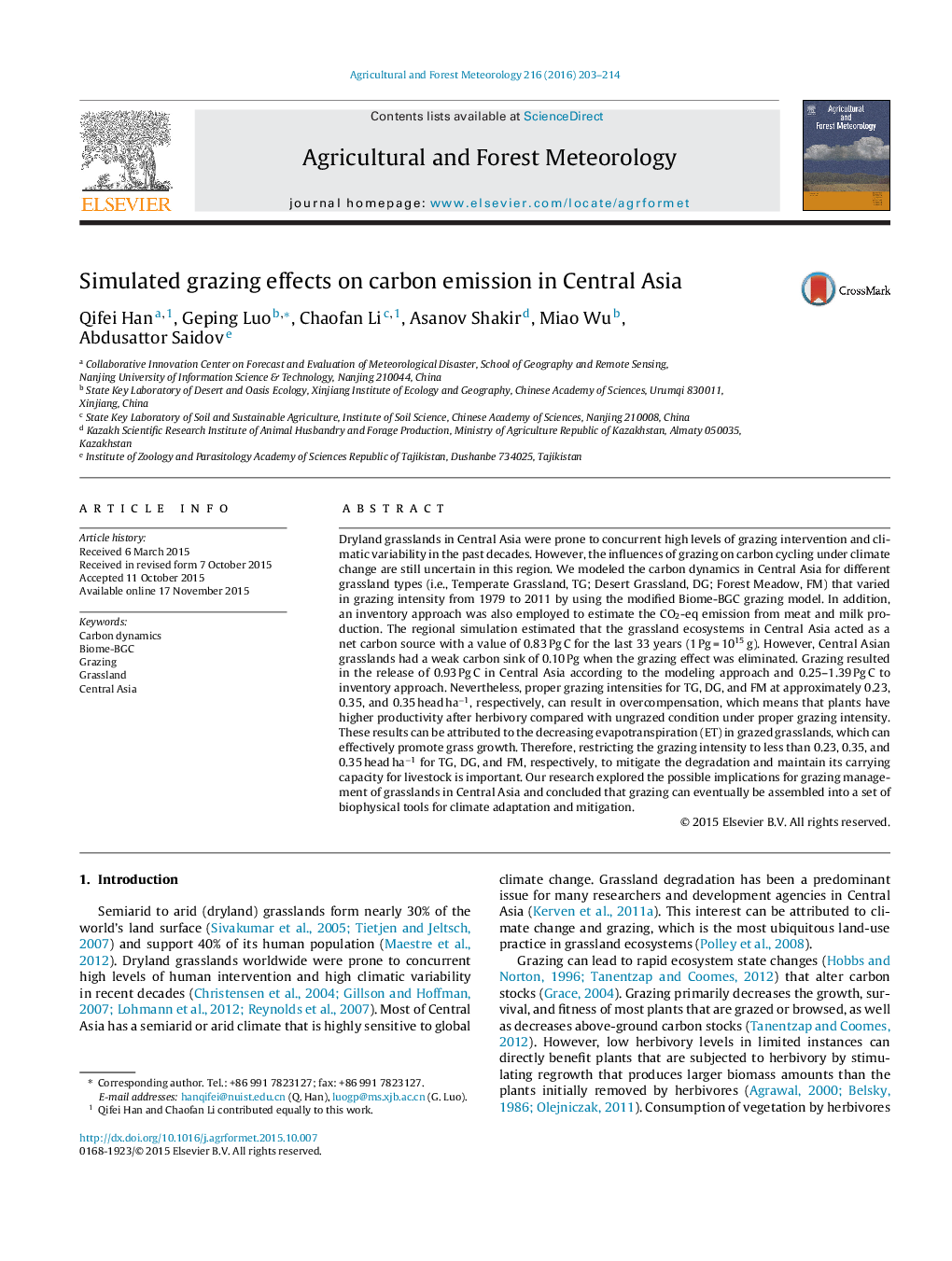| Article ID | Journal | Published Year | Pages | File Type |
|---|---|---|---|---|
| 6537130 | Agricultural and Forest Meteorology | 2016 | 12 Pages |
Abstract
Dryland grasslands in Central Asia were prone to concurrent high levels of grazing intervention and climatic variability in the past decades. However, the influences of grazing on carbon cycling under climate change are still uncertain in this region. We modeled the carbon dynamics in Central Asia for different grassland types (i.e., Temperate Grassland, TG; Desert Grassland, DG; Forest Meadow, FM) that varied in grazing intensity from 1979 to 2011 by using the modified Biome-BGC grazing model. In addition, an inventory approach was also employed to estimate the CO2-eq emission from meat and milk production. The regional simulation estimated that the grassland ecosystems in Central Asia acted as a net carbon source with a value of 0.83 Pg C for the last 33 years (1 Pg = 1015 g). However, Central Asian grasslands had a weak carbon sink of 0.10 Pg when the grazing effect was eliminated. Grazing resulted in the release of 0.93 Pg C in Central Asia according to the modeling approach and 0.25-1.39 Pg C to inventory approach. Nevertheless, proper grazing intensities for TG, DG, and FM at approximately 0.23, 0.35, and 0.35 head haâ1, respectively, can result in overcompensation, which means that plants have higher productivity after herbivory compared with ungrazed condition under proper grazing intensity. These results can be attributed to the decreasing evapotranspiration (ET) in grazed grasslands, which can effectively promote grass growth. Therefore, restricting the grazing intensity to less than 0.23, 0.35, and 0.35 head haâ1 for TG, DG, and FM, respectively, to mitigate the degradation and maintain its carrying capacity for livestock is important. Our research explored the possible implications for grazing management of grasslands in Central Asia and concluded that grazing can eventually be assembled into a set of biophysical tools for climate adaptation and mitigation.
Related Topics
Physical Sciences and Engineering
Earth and Planetary Sciences
Atmospheric Science
Authors
Qifei Han, Geping Luo, Chaofan Li, Asanov Shakir, Miao Wu, Abdusattor Saidov,
